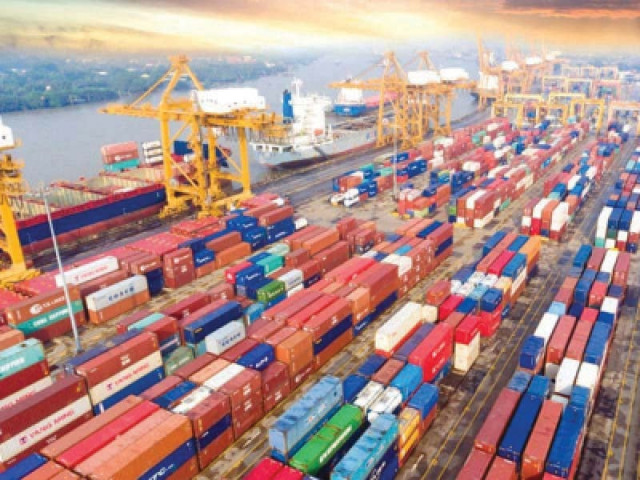Experts lay stress on export diversification
Believe focus on tap will help control trade deficit

The government must look for avenues, such as the IT sector, to diversify exports to control the widening trade deficit that has soared 57% to $48.66 billion in FY22, say businessmen. “Curtailing trade deficit in fiscal year 2022-23 will be the biggest economic challenge, without which the country will remain under a constant threat of default and its foreign exchange reserves will not build up to satisfactory levels,” remarked Irfan Iqbal Sheikh, President Federation of Pakistan Chambers of Commerce and Industry (FPCCI), in a statement. The trade deficit for FY22 touched a record $48.66 billion, which translated into an average of $4 billion a month.
“No country in the world with the size of economy Pakistan has can sustain that kind of trade imbalance and will slip into the vicious cycle of trade deficit, exchange rate volatility and current account deficit,” he said. Experts suggest the government needs to diversify exports and IT can be the best bet. “Pakistan has a huge potential in information technology and IT-enabled services (ITeS),” said startup investment expert Kapeel Kumar. “It can become one of the largest providers of IT services to the world. The country has the second-largest young population, which is widely computer-literate.” Moreover, Pakistan was ranked fourth in the world with respect to the freelance market, he said. “A large number of English-speaking IT professionals can market themselves effectively, as Pakistan is competitive in the traditional IT sourcing compared to other countries in the region.”
“IT exports need to be encouraged through all reasonable incentives as our potential is at least five times of what we are exporting currently,” said Khurram Schehzad, CEO Alpha Beta Core. “However, for long-term sustainable growth and competitive advantage in technology exports, we need to invest massively in our human capital to produce competitive IT professionals and entrepreneurs.” He lamented that despite a huge number of young tech graduates, hardly 10% of them were truly employable. “Until and unless we produce competitive human resources, we will not be able to unlock our IT export potential.”
Swarms of IT companies and call centres in addition to the technology parks and software houses were indicative of the country’s strength, said Kapeel Kumar. Besides, the start-up culture is spreading and has started attracting investors from other sectors. Despite all that, the country is lagging far behind in the export of IT products and services. “From the current export value of $1.5-2 billion, we can easily reach $20-25 billion by the end of 2030,” he said. However, the IT services export has not been made a cardinal principle of the trade policy, reflecting the bias towards merchandise export. Besides, the government has not allowed duty-free import of new IT equipment and accessories, pointed out Kumar.
There are taxes on the import of even used computers and components. Doing away with such taxes will improve computer and internet penetration in the country. “Trade deficit has reached an alarming level despite the ban on more than 800 non-essential luxury items,” said Noman Ahmed Said, CEO SI Global. The outgoing year’s trade deficit was propelled by the surge in prices of oil and other commodities in the international market due to supply chain disruptions caused by the war in Ukraine. “Keeping in mind the economic crisis and the worrisome trade deficit, it is of utmost importance that we, as a nation, work towards diversifying exports,” emphasised Said.


















COMMENTS
Comments are moderated and generally will be posted if they are on-topic and not abusive.
For more information, please see our Comments FAQ